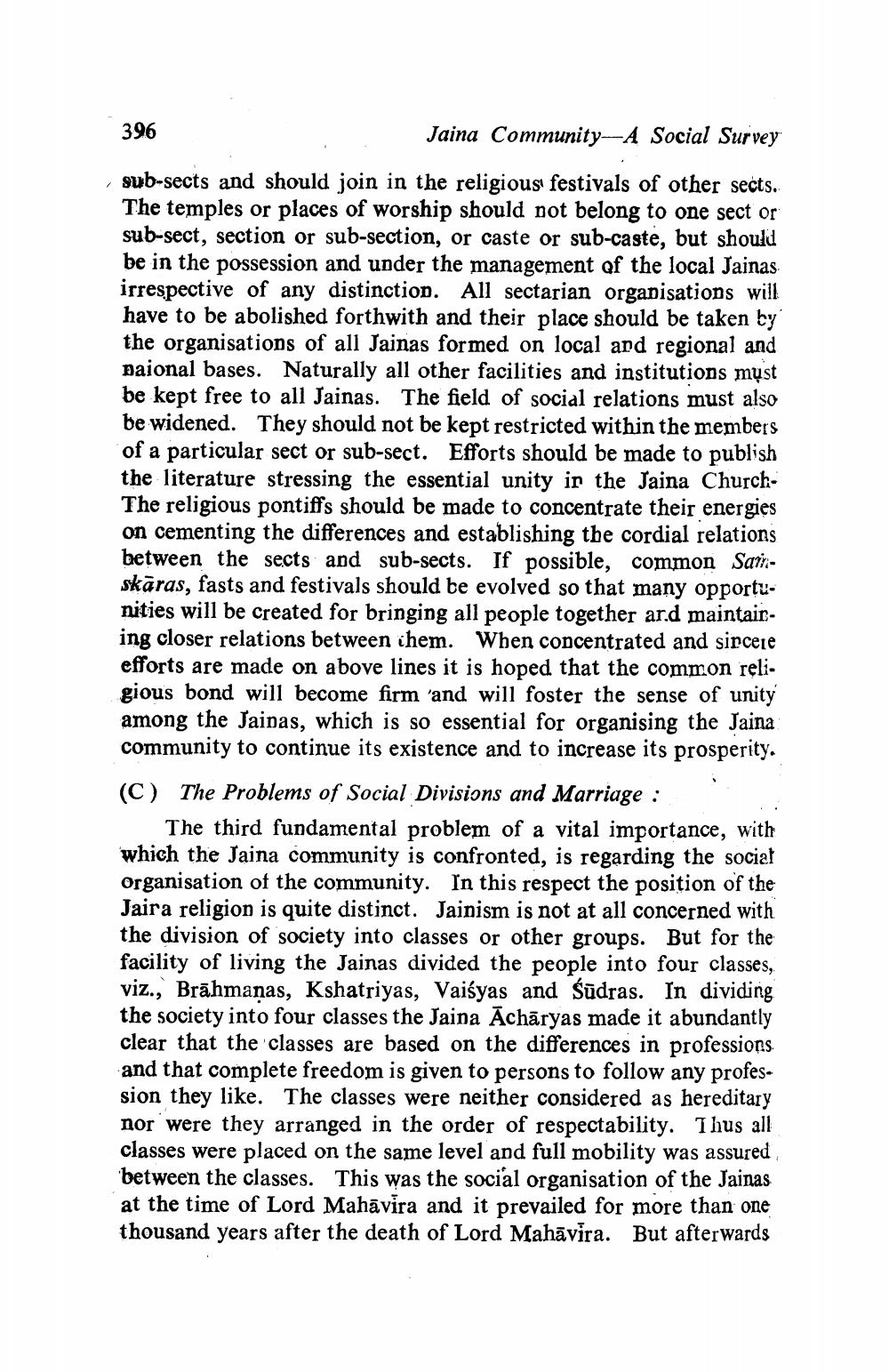________________
396
Jaina Community--A Social Survey sub-sects and should join in the religious festivals of other sects. The temples or places of worship should not belong to one sect or sub-sect, section or sub-section, or caste or sub-caste, but should be in the possession and under the management of the local Jainas irrespective of any distinction. All sectarian organisations will have to be abolished forthwith and their place should be taken by the organisations of all Jainas formed on local and regional and paional bases. Naturally all other facilities and institutions mụst be kept free to all Jainas. The field of social relations must also be widened. They should not be kept restricted within the members of a particular sect or sub-sect. Efforts should be made to publish the literature stressing the essential unity in the Jaina Church The religious pontiffs should be made to concentrate their energies on cementing the differences and establishing the cordial relations between the sects and sub-sects. If possible, common Sairskāras, fasts and festivals should be evolved so that many opportunities will be created for bringing all people together ar.d maintaining closer relations between ihem. When concentrated and sincete efforts are made on above lines it is hoped that the common religious bond will become firm 'and will foster the sense of unity among the Jainas, which is so essential for organising the Jaina community to continue its existence and to increase its prosperity. (C) The Problems of Social Divisions and Marriage :.
The third fundamental problem of a vital importance, with which the Jaina community is confronted, is regarding the social Organisation of the community. In this respect the position of the Jaira religion is quite distinct. Jainism is not at all concerned with the division of society into classes or other groups. But for the facility of living the Jainas divided the people into four classes, viz., Brāhmaṇas, Kshatriyas, Vaiśyas and Śūdras. In dividing the society into four classes the Jaina Achāryas made it abundantly clear that the classes are based on the differences in professions and that complete freedom is given to persons to follow any profession they like. The classes were neither considered as hereditary nor were they arranged in the order of respectability. Thus all classes were placed on the same level and full mobility was assured between the classes. This was the social organisation of the Jainas at the time of Lord Mahāvira and it prevailed for more than one thousand years after the death of Lord Mahāvira. But afterwards




